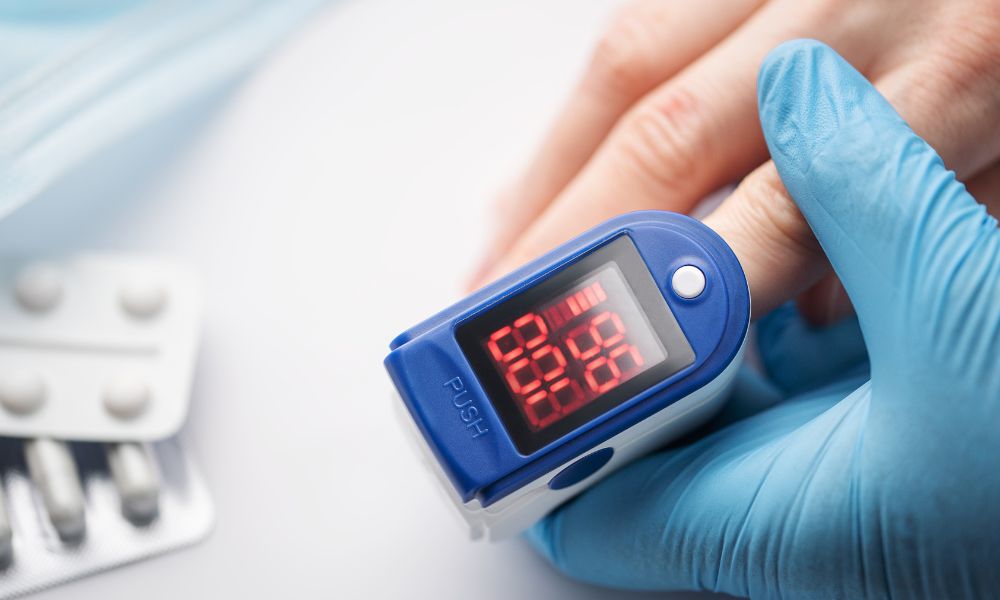Table of Contents
ToggleIn recent times, the global healthcare landscape has witnessed a surge in the adoption of home health monitoring devices, with pulse oximeters taking center stage. These compact gadgets have become an essential tool in monitoring and managing various health conditions. In this article, we will explore the significance of pulse oximeters, their functionality, and the crucial role they play in maintaining overall health.
Understanding Pulse Oximeters: The Basics
What is a Pulse Oximeter?
A pulse oximeter is a non-invasive medical device designed to measure the oxygen saturation level in the blood and pulse rate. This small, portable device is often clipped onto a person’s fingertip, where it uses light absorption to determine the amount of oxygen present in the blood. The measurements are typically displayed as SpO2 (oxygen saturation level) and pulse rate on the device’s screen.
The Significance of Oxygen Saturation
Why is Oxygen Saturation Important?
Oxygen saturation is a crucial indicator of how efficiently the respiratory and cardiovascular systems are functioning. A normal oxygen saturation level is around 95% to 100%, indicating that the bloodstream is effectively carrying oxygen to the body’s tissues and organs. A drop in oxygen saturation may be an early sign of respiratory or cardiovascular issues.
Applications of Pulse Oximeters
1. Monitoring Respiratory Conditions:
Pulse oximeters are frequently used to monitor individuals with respiratory conditions such as asthma, chronic obstructive pulmonary disease (COPD), and pneumonia. By regularly checking oxygen saturation levels, patients and healthcare providers can detect changes in respiratory function and adjust treatment plans accordingly.
2. COVID-19 Management:
The ongoing global pandemic has highlighted the importance of monitoring oxygen levels in individuals infected with the virus. COVID-19 can lead to severe respiratory distress, and a pulse oximeter serves as a valuable tool for early detection of oxygen saturation drops, prompting timely medical intervention.
3. Athletic Performance Optimization:
Athletes and fitness enthusiasts use pulse oximeters to assess their oxygen levels during workouts. Monitoring oxygen saturation helps individuals optimize their training intensity, ensuring they maintain peak performance while minimizing the risk of oxygen deprivation.
Choosing the Right Pulse Oximeter
Factors to Consider:
1. Accuracy:
Look for pulse oximeters with proven accuracy. High-quality devices provide reliable readings even in challenging conditions, such as low blood perfusion or motion artifacts.
2. Display and User Interface:
Opt for models with clear displays and user-friendly interfaces. Some pulse oximeters offer additional features like adjustable brightness and rotating screens for ease of use.
3. Battery Life:
Consider the battery life of the device, especially if it is intended for continuous monitoring. Long-lasting batteries ensure uninterrupted use, making the pulse oximeter a reliable companion.
The Future of Pulse Oximetry
Technological Advancements:
As technology continues to advance, pulse oximeters are evolving to offer more features and capabilities. Some modern devices can now track trends in oxygen saturation over time, providing a more comprehensive picture of an individual’s respiratory health. Additionally, integration with smartphones and healthcare apps enables users to store and share their health data seamlessly.
4. Telehealth Integration:
Pulse oximeters have seamlessly integrated into the realm of telemedicine, providing healthcare professionals with real-time data on patients’ oxygen saturation levels during virtual consultations. This integration has proven invaluable in remote patient monitoring, allowing doctors to assess respiratory health without the need for in-person visits.
Telehealth platforms often incorporate pulse oximeters as part of remote monitoring kits, enabling patients to transmit their vital signs to healthcare providers from the comfort of their homes. This not only enhances the efficiency of healthcare delivery but also reduces the need for unnecessary hospital visits, particularly beneficial for individuals with chronic respiratory conditions or those in remote locations.
As telemedicine continues to gain prominence, the role of pulse oximeters in facilitating remote health monitoring is poised to become even more significant. The synergy between technology and healthcare is transforming the way we manage and monitor health, and pulse oximeters are at the forefront of this revolution.
Conclusion: A Vital Companion for Health Monitoring
In the realm of home health monitoring, pulse oximeters stand out as indispensable devices, offering valuable insights into respiratory and cardiovascular health. Whether used to manage chronic conditions, monitor COVID-19 symptoms, or optimize athletic performance, these compact gadgets play a vital role in empowering individuals to take charge of their well-being. As technology continues to advance, the future holds even more promise for pulse oximeters, further solidifying their place as a crucial companion in the journey towards optimal health.




